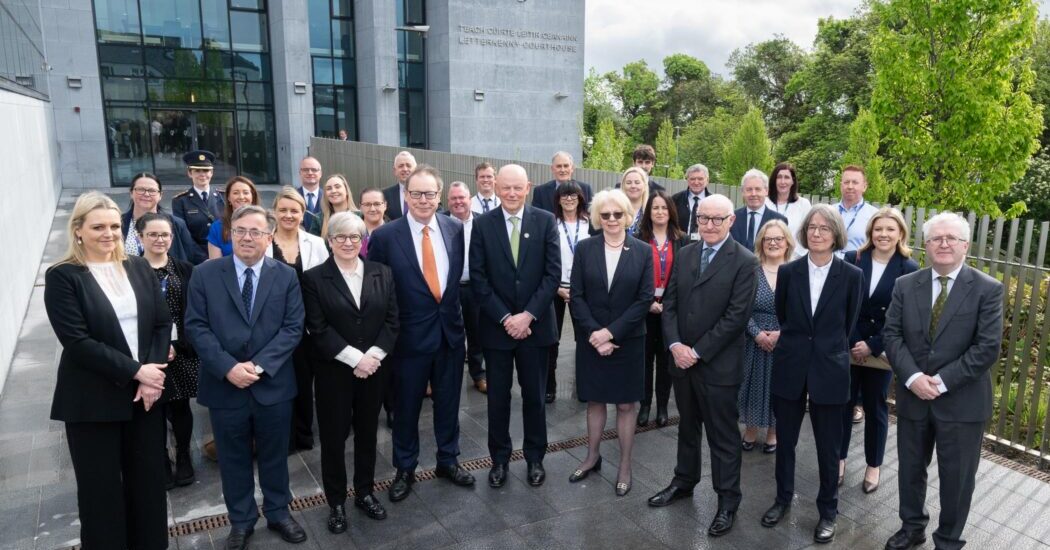Significant legal history was made on Monday when the Supreme Court sat in Donegal for the first time.
The sitting, at Letterkenny Courthouse, was only the fifth time in history that the Supreme Court sat outside of Dublin and the first time in the north-west.
Chief Justice Donal O’Donnell was in attendance and said it was a “great personal pleasure to be in Donegal”.
District Court Judge Éiteáin Cunningham, Garda Chief Superintendent Gorertti Sheridan and other high-ranking Gardaí and legal practitioners were among those in court number 1 as the five-judge court got underway.
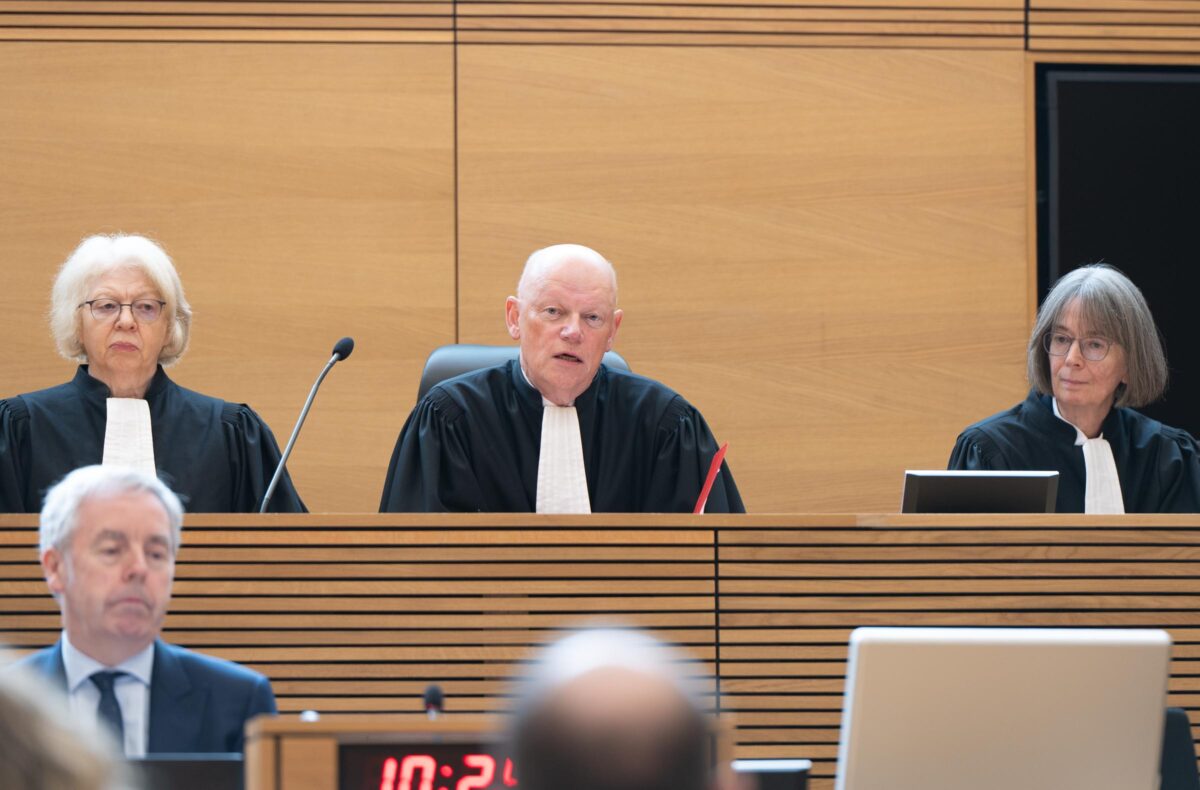
Members of the Supreme Court in Letterkenny for the first time- with Chief Justice Donal O’Donnell seated in the centre. Photo Clive Wasson
Ms. Justice Elizabeth Dunne from Roscommon, Mr. Justice Gerard Hogan of Tipperary and Dublin-born judges Mr. Justice Brian Murray and Ms. Justice Aileen Donnelly sat either side of Mr Justice O’Donnell in a notable moment in the legal world of Donegal.
Mr Justice O’Donnell said he was making good on a promise made by former Chief Justice Frank Clarke at the opening of the new courthouse in Letterkenny in 2018.
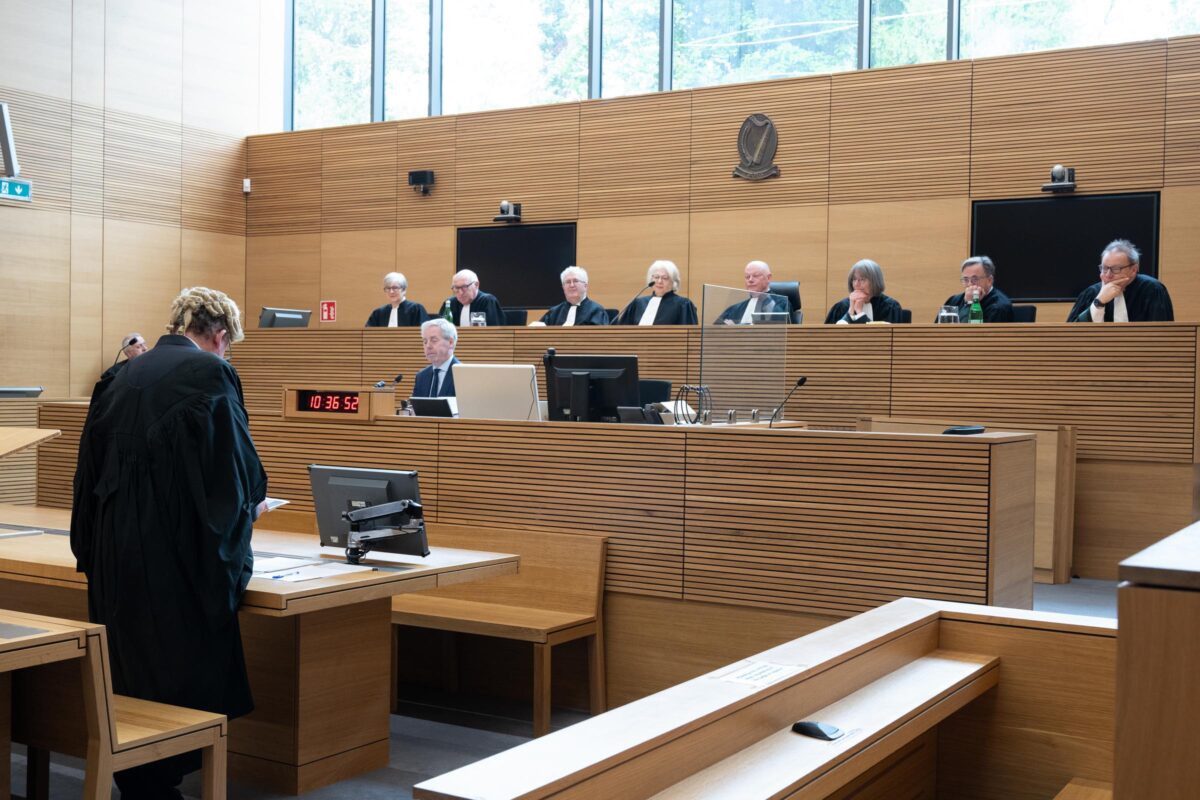
The first sitting of the Supreme Court in Letterkenny, Co. Donegal. Photo Clive Wasson
The Supreme Court sat for the first time in June 1924 and the first Chief Justice, Hugh Kennedy – whose father was from Kilclooney – spoke. “This is surely a precious moment – the moment when the silence of the Gael in the courts of law is broken,” Mr Justice Kennedy said 101 years ago. “The moment when Irish courts are thrown open to administer justice according to laws made in Ireland by free Irish citizens.”
Mr Justice O’Donnell said: “What we are doing today in hearing a case is in itself a precious thing. The administration of justice in public under the Constitution means that any citizen of Ireland can come in and see the administration of justice in any court in Ireland, can see the argument of counsel, the evidence of witnesses and hear and read the decisions, or in the case of the Supreme Court the reasons for the decision.
“That is something that is both precious and valuable, but also fragile. The purpose, in many ways, of the court sitting outside Dublin is not just giving people an opportunity to see the Supreme Court, but it is a demonstration of the fact that the protection of the rule of law and the performance of the rule of law and the performance of justice is a job for every day.
“The rule of law is something that has life and reality in every court in every courthouse on every day.”
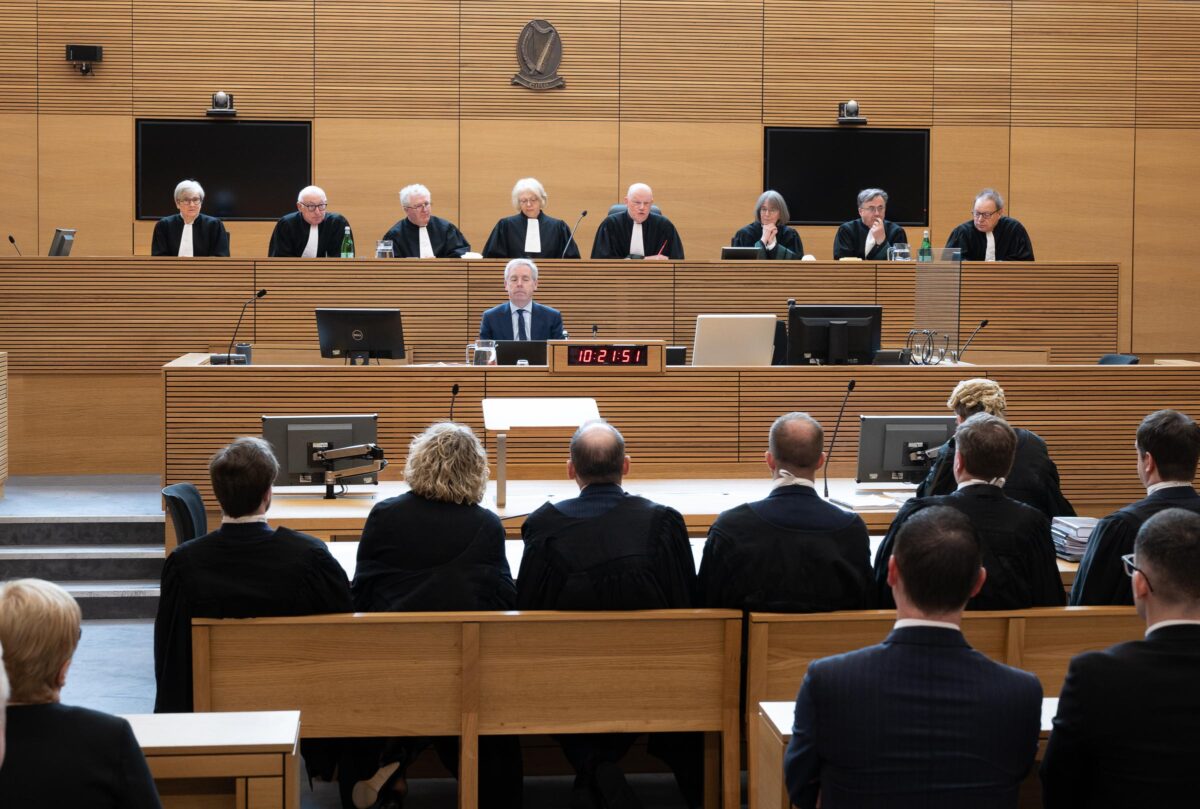
At the first sitting of the Supreme Court in Letterkenny, Co. Donegal. Photo Clive Wasson
The Supreme Court first sat outside of Dublin ten years ago when it heard cases in Cork in 2015, followed by Limerick in 2018, Galway in 2019, and Waterford in 2020, before the practice was interrupted by the Covid-19 pandemic in 2020.
“It is a great personal pleasure for me to be back here in County Donegal, the historic land of the O’Donnells and to be able to sit at this, the first sitting of the Supreme Court not only in Donegal, but the historic province of Ulster,” Mr Justice O’Donnell said. “For the first 90 years, the Supreme Court sat exclusively in Dublin – all cases that came to the Supreme Court came from all over Ireland eventually. The country came to the Supreme Court rather than the Supreme Court going to the country.
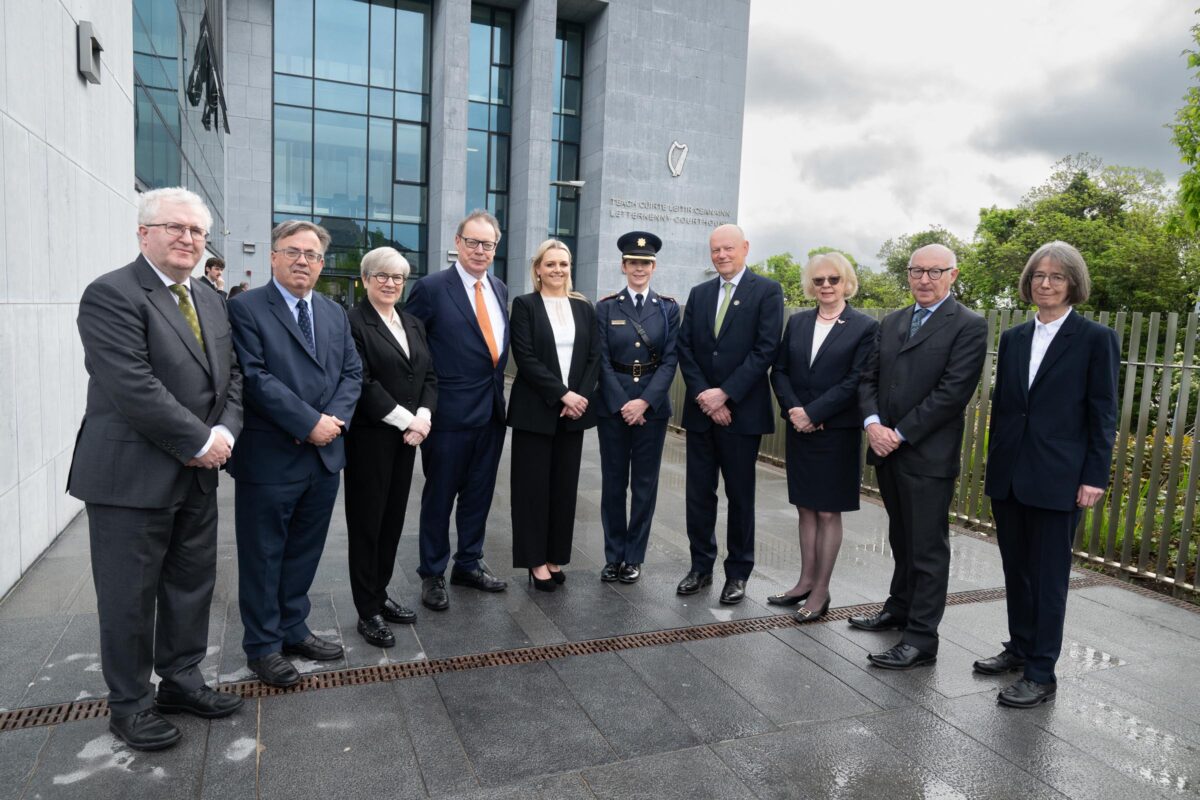
At the first sitting of the Supreme Court in Letterkenny, Co. Donegal. Photo Clive Wasson
“Some of those cases were inconsequential and some were very consequential.
“In 2013, we saw a significant change with the passing of the 33rd amendment to the Constitution, which established the Court of Appeal, the first addition to the structure set in 1924.
“The creation of the Court of Appeal in fact created a new jurisdiction for the Supreme Court…It was now much less likely that cases from Donegal would come to the Supreme Court. It is much more likely now that decisions of the Supreme Court affect everyone, and therefore it was thought that it was important for the Supreme Court to sit more outside of Dublin.
Monday’s sitting of the Supreme Court heard the case of Imran v Minister for Justice.
This case involved the Minister for Justice and a man, Mohammad Imran, who was granted a permanent residence card in Ireland, based on his marriage to an EU citizen.
Later, the Minister revoked this card, saying that Mr. Imran had submitted false or misleading documents – specifically, fake invoices that claimed his wife was working as a self-employed childminder in 2016. However, Mr. Imran’s own lawyer later stated that his wife left Ireland in January 2016 and hadn’t returned, which would make the invoices impossible.
Mr. Imran challenged the revocation and the High Court sided with him, saying the Minister should have carried out a “proportionality assessment” – essentially, weighing up if taking away the residence card was fair, considering Mr. Imran had been living in Ireland for many years, was married, and had no criminal issues.
However, the Court of Appeal disagreed. It found that because the residence was obtained through fraud, the Minister was right to revoke it and didn’t need to do a separate fairness test. The court also said that Mr. Imran’s legal team had failed to mention important facts earlier in the case.
While in Letterkenny, the Supreme Court has also engaged with the local practising professions, Atlantic Technological University – where lectures and seminars were conducted – second-level schools in Stranorlar and Milford and local civil-society organisations.
Mr Justice O’Donnell thanked Circuit Court Judge John Aylmer, District Court Judge Cunningham, the Court Service staff in Letterkenny and the various practitioners.








